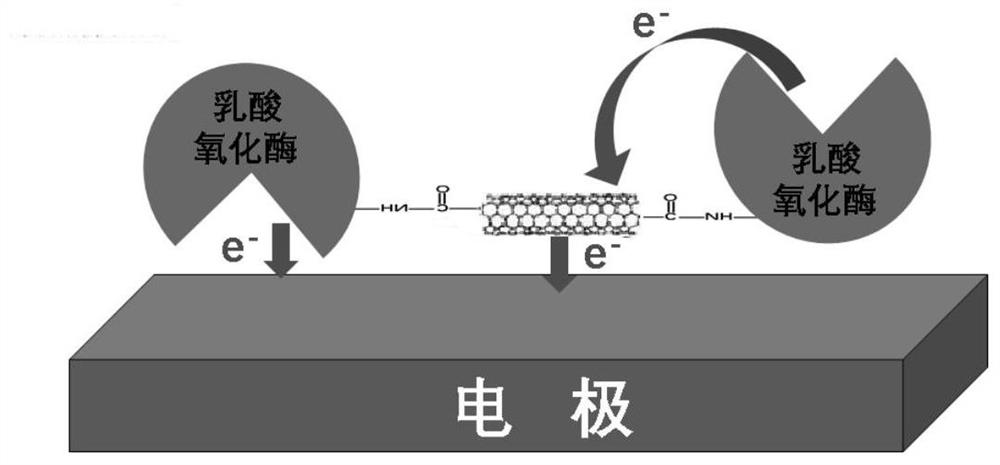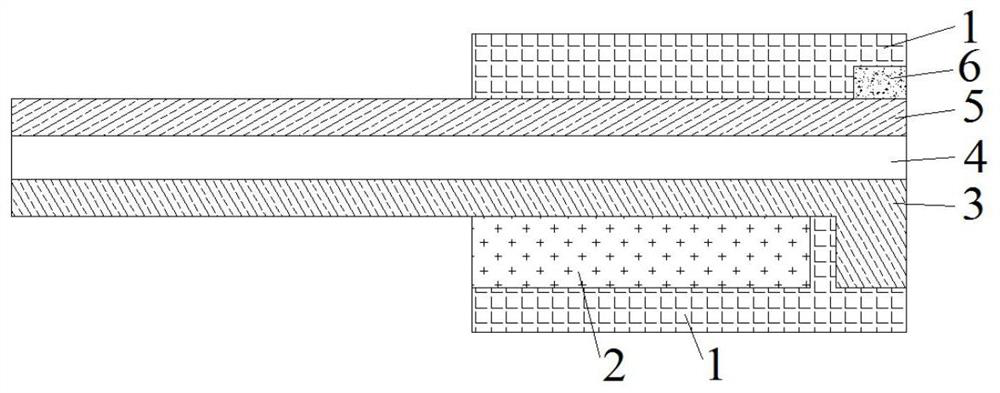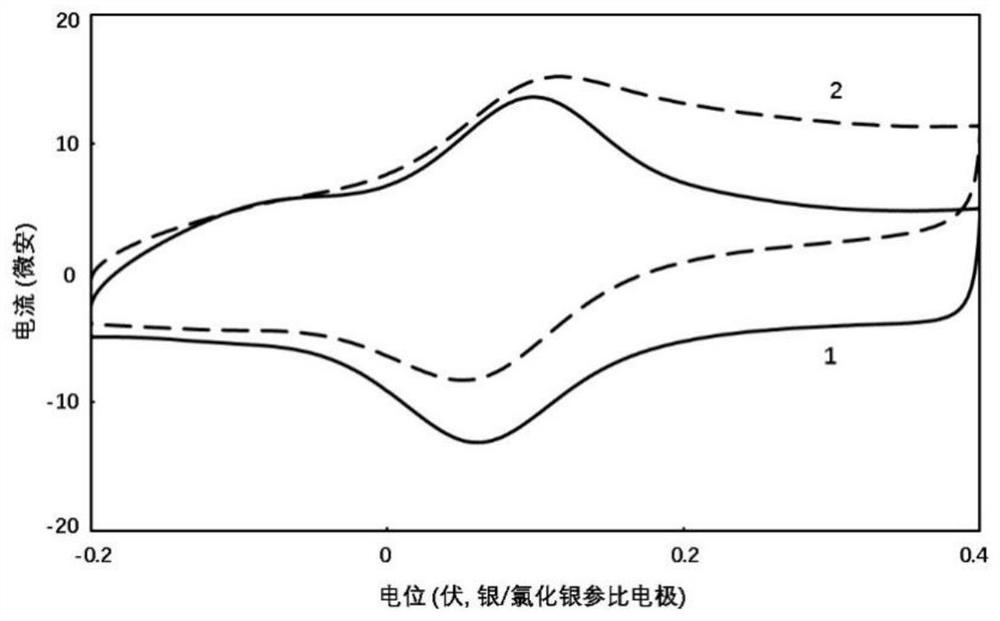Lactic acid biosensor
A biosensor, lactic acid technology, applied in the field of biosensors, can solve problems such as low stability, high cost, complex manufacturing process, etc., achieve high biocompatibility, simplify design and manufacture, and simplify design and manufacture.
- Summary
- Abstract
- Description
- Claims
- Application Information
AI Technical Summary
Problems solved by technology
Method used
Image
Examples
Embodiment 1
[0041] Such as figure 1 , 2 As shown, a lactic acid biosensor includes a substrate 4 , a carbon working electrode 5 , a carbon counter electrode 3 , a reference electrode 2 , a lactic acid sensing film 6 and a biocompatible film 1 .
[0042] Wherein, the substrate 4 is a polyethylene terephthalate substrate, the reference electrode 2 is a silver / silver chloride reference electrode, and the carbon working electrode 5 is an aminated graphite printing electrode.
[0043]The lactic acid sensing film 6 is formed on the surface of the carbon working electrode 5 by chemically crosslinking the lactate oxidase that establishes the electron transfer network through a bifunctional chemical crosslinking agent, and its preparation method is as follows:
[0044] S1: Incubate 5 mg / mL lactate oxidase in PBS buffer solution containing 6 mol / L guanidine hydrochloride at 4°C for 12 hours to fully develop lactate oxidase;
[0045] S2: Add 5 mg / mL of osmium complex with free amino groups, make i...
Embodiment 2
[0058] Such as figure 1 , 2 As shown, a lactic acid biosensor includes a substrate 4 , a carbon working electrode 5 , a carbon counter electrode 3 , a reference electrode 2 , a lactic acid sensing film 6 and a biocompatible film 1 .
[0059] Wherein, the substrate 4 is a polyethylene terephthalate substrate, the reference electrode 2 is a silver / silver chloride reference electrode, and the carbon working electrode 5 is an aminated graphite printing electrode.
[0060] The lactic acid sensing film 6 is formed on the surface of the carbon working electrode 5 by chemically crosslinking the lactate oxidase that establishes the electron transfer network through a bifunctional chemical crosslinking agent, and its preparation method is as follows:
[0061] S1: Incubate 1 mg / mL lactate oxidase in PBS buffer solution containing 3 mol / L guanidine hydrochloride at 4°C for 8 hours to fully develop lactate oxidase;
[0062] S2: Add 1mg / mL copper complex with free amino group, mix it well...
Embodiment 3
[0075] Such as figure 1 , 3 As shown, a lactic acid biosensor includes a substrate 4 , a carbon working electrode 5 , a carbon counter electrode 3 , a reference electrode 2 , a lactic acid sensing film 6 and a biocompatible film 1 .
[0076] Wherein, the substrate 4 is a polyethylene terephthalate substrate, the reference electrode 2 is a silver / silver chloride reference electrode, and the carbon working electrode 5 is an aminated graphite printing electrode.
[0077] The lactic acid sensing film 6 is formed on the surface of the carbon working electrode 5 by chemically crosslinking the lactate oxidase that establishes the electron transfer network through a bifunctional chemical crosslinking agent, and its preparation method is as follows:
[0078] S1: Incubate 10 mg / mL lactate oxidase in PBS buffer solution containing 8 mol / L guanidine hydrochloride at 4°C for 24 hours to fully develop lactate oxidase;
[0079] S2: Add 10mg / mL of copper complex with free amino group, mix i...
PUM
 Login to View More
Login to View More Abstract
Description
Claims
Application Information
 Login to View More
Login to View More - R&D Engineer
- R&D Manager
- IP Professional
- Industry Leading Data Capabilities
- Powerful AI technology
- Patent DNA Extraction
Browse by: Latest US Patents, China's latest patents, Technical Efficacy Thesaurus, Application Domain, Technology Topic, Popular Technical Reports.
© 2024 PatSnap. All rights reserved.Legal|Privacy policy|Modern Slavery Act Transparency Statement|Sitemap|About US| Contact US: help@patsnap.com










